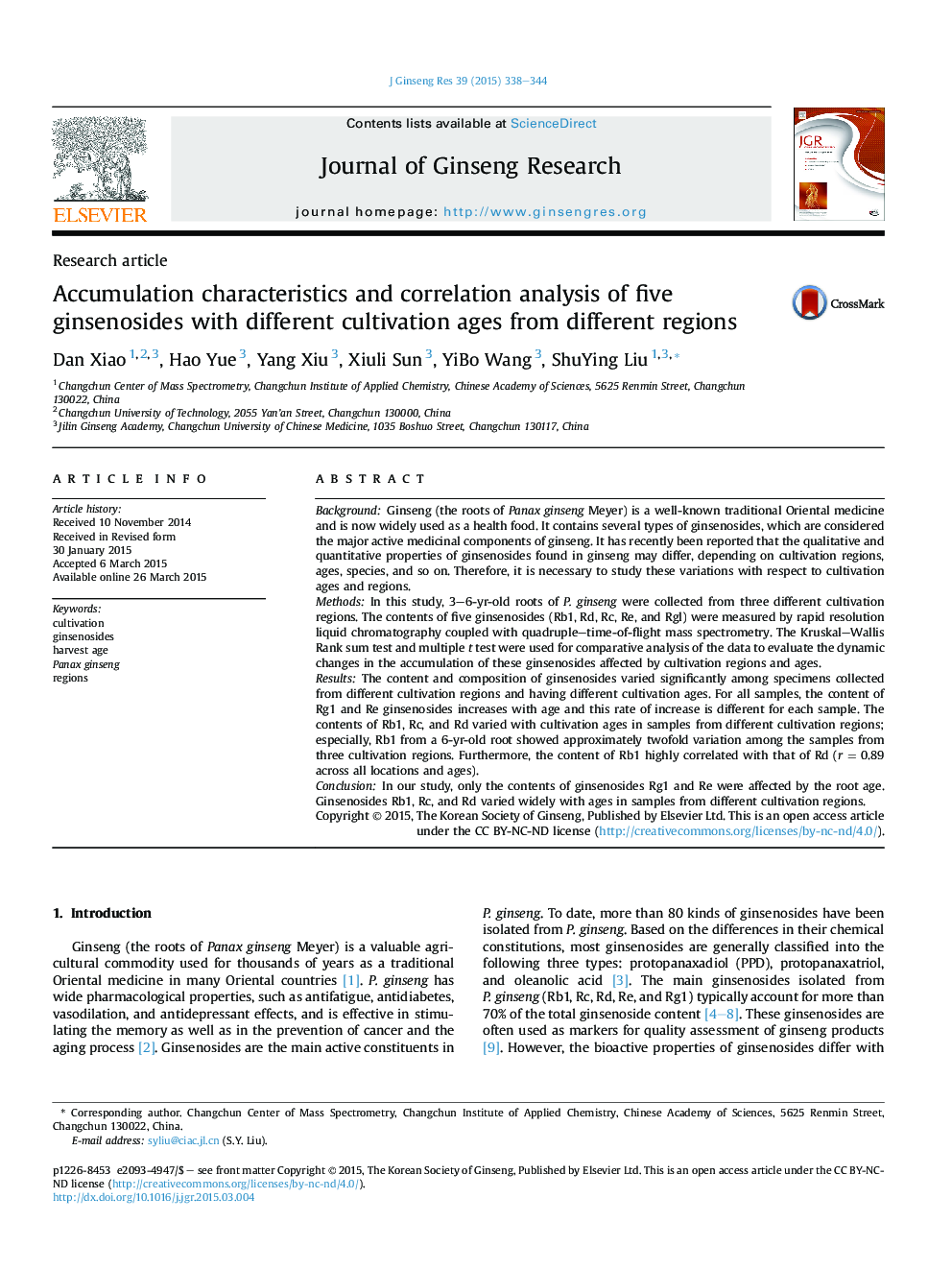| Article ID | Journal | Published Year | Pages | File Type |
|---|---|---|---|---|
| 3099294 | Journal of Ginseng Research | 2015 | 7 Pages |
BackgroundGinseng (the roots of Panax ginseng Meyer) is a well-known traditional Oriental medicine and is now widely used as a health food. It contains several types of ginsenosides, which are considered the major active medicinal components of ginseng. It has recently been reported that the qualitative and quantitative properties of ginsenosides found in ginseng may differ, depending on cultivation regions, ages, species, and so on. Therefore, it is necessary to study these variations with respect to cultivation ages and regions.MethodsIn this study, 3–6-yr-old roots of P. ginseng were collected from three different cultivation regions. The contents of five ginsenosides (Rb1, Rd, Rc, Re, and Rgl) were measured by rapid resolution liquid chromatography coupled with quadruple–time-of-flight mass spectrometry. The Kruskal–Wallis Rank sum test and multiple t test were used for comparative analysis of the data to evaluate the dynamic changes in the accumulation of these ginsenosides affected by cultivation regions and ages.ResultsThe content and composition of ginsenosides varied significantly among specimens collected from different cultivation regions and having different cultivation ages. For all samples, the content of Rg1 and Re ginsenosides increases with age and this rate of increase is different for each sample. The contents of Rb1, Rc, and Rd varied with cultivation ages in samples from different cultivation regions; especially, Rb1 from a 6-yr-old root showed approximately twofold variation among the samples from three cultivation regions. Furthermore, the content of Rb1 highly correlated with that of Rd (r = 0.89 across all locations and ages).ConclusionIn our study, only the contents of ginsenosides Rg1 and Re were affected by the root age. Ginsenosides Rb1, Rc, and Rd varied widely with ages in samples from different cultivation regions.
